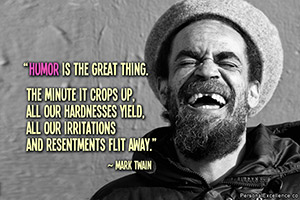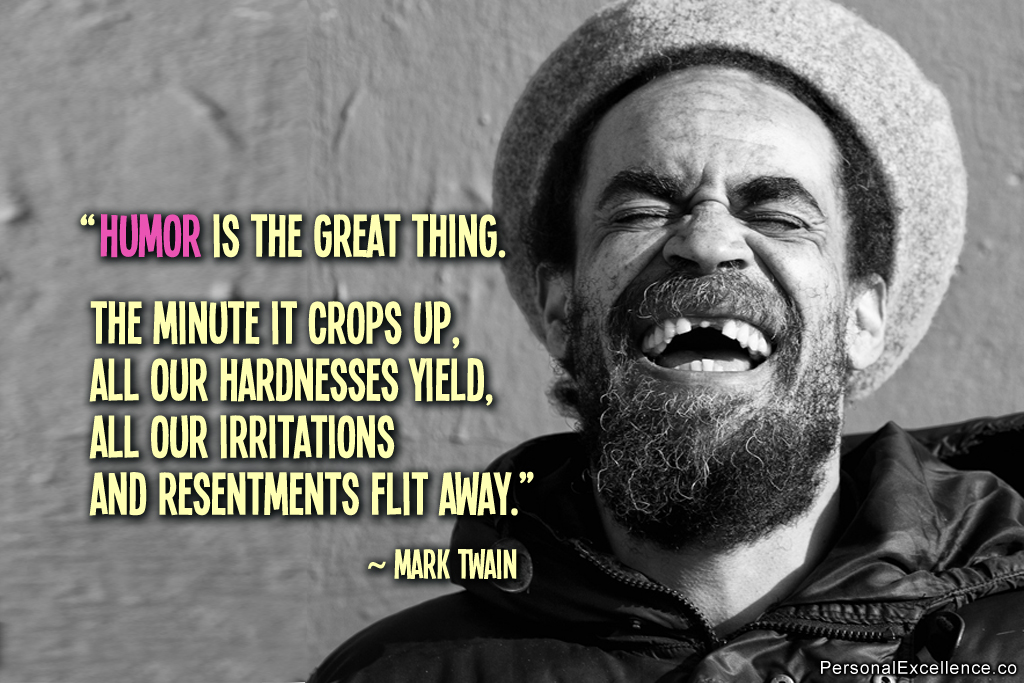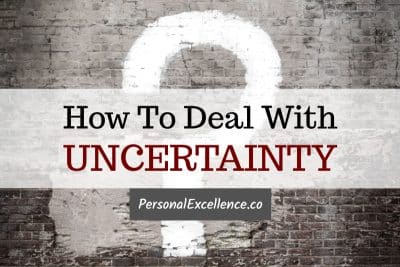
(Image)
Have you ever thought about who you are? What you stand for?
I’m not talking about your life roles or your social identity. You can be a friend, brother/sister, employee, boyfriend/girlfriend/husband/wife, father/mother, and son/daughter all at the same time, but these are just an aspect of you. They don’t represent who you fundamentally are on the inside. Your inner self is who you really are on the inside.
To know your inner self is to know your purpose, values, vision, goals, motivations, and beliefs. Not what you have been told by others, but what you have discovered for yourself. Knowing your inner self requires a high level of introspection and self-awareness. If you have clarity of at least half of what is listed above, you probably have quite a high level of self-awareness. At the same time, the process of self-discovery never ends — it’s a life-long journey.
You Are More Than Your Identities
Trying to uncover your inner self can be a tricky process. For one, you hold multiple identities in your life, each with its own set of socially defined values and expectations. They may not fully conform to who you are on the inside.
For example, let’s say you are an employee of a car company. As an employee, your mission should be congruent with whatever your company’s mission is, say to improve people’s lives through better transportation. Your goals should also be in line with the company’s, say to increase the company’s sales by 20% in one year and expand its regional presence.
However, as a person you have other goals and dreams which differ from your company’s. Perhaps you love volleyball. Your ideal vision is to be an internationally acclaimed volleyball player and to become a highly sought-after volleyball coach, training national teams. That’s very different from what’s expected of you as an employee of a car company. This applies to your other identities too. For every identity, you are expected to have a set of purpose/values/vision/beliefs which may not be exactly the same as your inner self’s purpose/values/vision/beliefs.
Because everyone is unique, your inner self can’t be boxed in by any one identity or label. I’m a coach to my coachees, a daughter to my parents, a sister to my brother, a friend to my friends, a blogger to my readers, and a trainer to my workshop attendees, but I’m more than just that. These are just roles and titles. None of the roles by themselves accurately pinpoint who I am. The inner me is someone who cannot be defined by any one label.
A good analogy to use would be the sunflower. Your inner self is like the head of the sunflower (the center part where petals are attached to). Your identities are like the petals around your inner self. While the petals are extensions of the head, they are not the head. Similarly, your identities are extensions of yourself, but they do not represent who you are wholly.
Importance of Finding Your Inner Self
If you have never given much thought to who you are on the inside, it is likely that you have become defined by your identities. It is common for people to see themselves as a certain role, such as a friend, partner, employee, or son/daughter. Some spend their whole lives building themselves around such identities. Take those identities away, and they get lost, because they have little awareness of who they are on the inside. These people are not able to articulate their own vision, goals, and beliefs beyond what’s imposed by their identities.
For example, someone who is entrenched in his identity as a son sees his entire existence as a son. He will act in accordance with what’s best for his parents. He will spend a lot of time with his parents, do things for them, and forsake other things in his life if it’s needed to make his parents happy. When it comes to making important decisions, such as pertaining to his career or life partner, he makes sure that his parents approve before he takes any action. His parents are the central focus of his life.
However, his real self is more than just being a son to his parents. If or rather when his parents exit from his life, he will be in a state of total loss. His life will start spiraling out of control since the anchor he has been building his life on is gone. It’s like when the head of the sunflower disappears, all the petals will scatter away since there is nothing to hold them together. When you become overly attached to any one of your identities, you run into the risk of an identity crisis when that particular role is removed.
Here I’m not saying that being a good son is bad or being a good parent is bad. That’s not true at all. What I’m saying is that we need to know who we are on the inside, while being committed to our roles and understanding that these are extensions of who we are.
That’s why it’s important to find your inner self. You are the owner of your life. If you are not connected with who you really are, you are probably just living your life for others. Pursuing others’ goals and living up to others’ expectations, rather than what you really want. To know your inner self is the first step of living a conscious life of your creation.
Knowing Your Inner Self Comes From Self-Awareness
As mentioned in the beginning, knowing your inner self comes from being self-aware. Even if you do not have full clarity of your inner self, it is likely that certain aspects of him/her are already exhibited on a day-to-day basis through how you act. For example, if you find yourself often extolling the importance of filial piety, responsibility is likely one of your values. If you feel a compelling need to always be there for your friends, reliability is probably an important value to you.
It is perfectly okay if you don’t know your inner self. Discovering and unraveling it is a life-long process. If I use myself as an example, the 10-year-old Celes definitely wasn’t as self-aware as the 25-year-old Celes or 35-year-old Celes. When I was in primary and secondary school, I didn’t really know who I was or what I stood for. I don’t think anybody at that age does actually. Everyone was just focused on doing what they were told. There wasn’t much introspection or self-awareness going on. We were never asked to think about who we were, what we thought, or who we wanted to be. While we had our own personalities, they were hazy at best.
Come think of it, I think the reason why the self-awareness was so low is because conformance was highly valued in school (or should I say, the Chinese society). Back then, having an opinion was seen as being defiant. Our role as a student was to follow instructions, not to question. If you had thoughts different from what was told, you would be shut down. That’s why we never thought about what we wanted. We were more like robots doing what was told, or sleepwalkers as I like to call it.
When I went to junior colleage and subsequently university, I became more self-aware. A lot of it came about from having increased liberty, for example getting to choose my classes and no longer being barked down by teachers. This may seem simple to you, but this was the first time I felt a sense of control in my life. Having more onus in decision making triggered me to think more — about what I wanted for my future. I was doing many activities on the side which helped me grow in other ways — for example, one of my hobbies then was web design so I was managing a large network of sites. I was also taking part in various extracurricular activities and giving private tuition to several students.
Subsequently as I worked in my previous company and subsequently quit to embrace my passion, I learned more about myself. Every day is a learning journey in discovering who I am and what I stand for. The more I uncover about myself, the more I am able to live consciously.
What’s Beneath Your Identities?
Let’s try an exercise to discover your inner self. Start off by removing all the different identities that you have been layered with throughout your life. This means stop thinking about yourself as a brother, a colleague, a friend, a partner, or whatever identity you commonly associate yourself with. Think about you as just yourself.
With a pen and paper, start writing whatever comes to mind as you read the questions below.
- What is your life purpose? What purpose do you see yourself standing for? (If you don’t know your purpose, check out my 7-part series on How To Discover Your Life Purpose)
- What is your vision for yourself, independent of anyone else? What goals and dreams do you have for yourself for the next 1 year, 3 years, 5 years, or even 10 years?
- What are YOUR motivations in life? What gets you going, day after day? What will you fight for? What do you feel passion about?
- What are your values? What qualities are important to you?
- What are your beliefs about the world?
If this is the first time you are doing such an exercise, you will probably get into a bit of a jam. Some of your answers may come from one of your social identities. If you are very family-centriv, you may find your answers wholly centered around caring for your family. It’s totally fine to have such an answer, but at the same time it should not be your only answer, because you are more than your family. Start thinking beyond your family. What is your vision for yourself, outside of family? What are your personal motivations in life?
Don’t worry if you have difficulty writing the answers. Even if you draw up a blank, there is a real you that lies beneath your social identities, waiting to be uncovered.
Here are some steps that I have found useful in uncovering my inner self:
- Continuously learning and growing
- Digging into my blind spots
- Putting myself in unknown situations to spike my learning curve
- Constant self-questioning
- Looking beyond what I’ve been told to discover what I want for myself
- Listening to my gut feeling
By doing this exercise, you have triggered the search process to discover the real you. You will start to become more aware of your thoughts and actions. Soon, you will get an impression of your inner self, separate from your social identities. Eventually, you will reach a stage where you have strong clarity of who you are as a person.
Aligning with Your Inner Self
As you uncover more of your inner self, you may find that some of your real life identities do not match your inner self. There’s a conflict between who you are and who you are expected to be. If so, that’s fine. It’s a first step to discover who you are. The next step is to live in alignment with your inner self, as best as you can, within the context of the situation. At the same time, start to make long term plans to ultimately live in alignment with your true self.
For example, when I was working in my ex-company, my inner self was passionate about helping others to grow in a conscious way. However, my identity as an employee of a consumer goods company required me to manage skincare brands and come up with ideas to maximize their skincare business. That meant coming up with business and marketing strategies to get consumers to buy skincare products. In my opinion, the beauty industry today is largely a low consciousness one as it tends to assume a fixed beauty ideal and pushes the idea that some natural aspects of human appearance are ugly (freckles, wrinkles, laugh lines, loose skin), so it wasn’t in line with my inner self. There was a conflict between my identity as an employee and my inner self.
What I did was then to live in alignment with my inner self as best as I could while working there, while kicking off my plans to pursue my passion in the long term. Since I couldn’t do anything to change the nature of the company, I focused on what I could effect — establishing strong relationships with my colleagues and raising their consciousness through every interaction and meeting. Eventually, I saw the opportunity to make the leap in 2008. This marked the biggest step where I closed the gap with my inner self. The rest, as they say, is history.
Every action you take should move you towards your inner self. If you have roles that do not match your inner self, there are two possible steps you can take. First, try to find the common ground between those identities and your inner self. This may involve shaping the identities to fit who you are. If this doesn’t work, the other (more drastic) option is to remove or change the role altogether. For example when I left my previous company, I effectively removed my identity as an employee in the company; or when I shed naysayers from my life, I was effectively removed my role as a friend to them (and them to me).
Constantly doing these two steps has helped me become more congruent with my true self. Today, I’m at a place where my external identities are well matched with who I am on the inside. While there’s definitely still room for improvement, they are quite congruent with one another. And these didn’t happen by chance. They came about as a result of conscious effort.
Focus on finding your inner self, and then start to live in alignment with it. That’s when you start to live a conscious life. :)
Check out Be a Better Me in 30 Days, my 30-day program to discover your inner self and become your highest version of you.







 I hope you find my content helpful. Join my community of 65,000 readers and get my latest articles delivered to your inbox. Your email is safe and I never send spam.
I hope you find my content helpful. Join my community of 65,000 readers and get my latest articles delivered to your inbox. Your email is safe and I never send spam.
nice article
Hi , I love everything you write. I read some of it every morning with my coffee:)
Hi celes, realyy it is wothable article for every humanbeing thnk you.
Thank you Celes, I hope this is my new beginning.
Hi Celes:
You articles are very inspiring
Commenting for this post is closed.